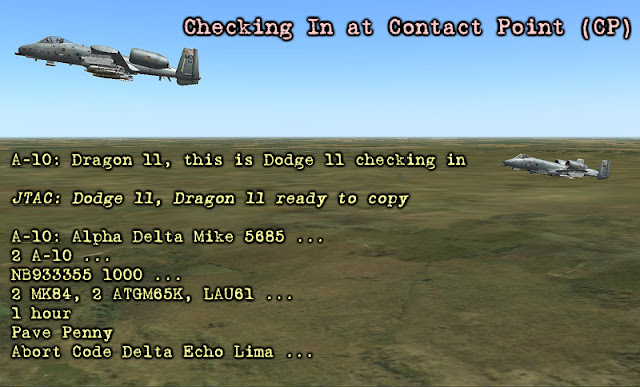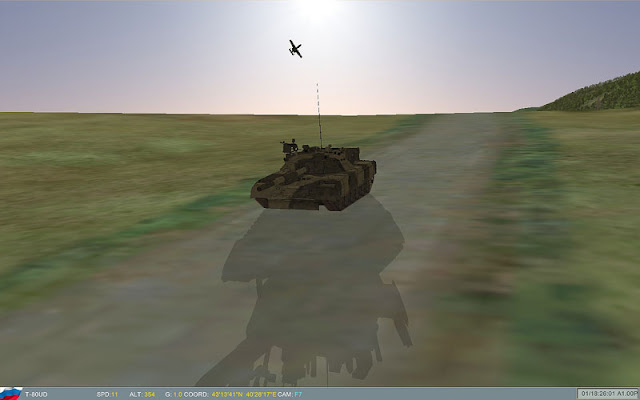We are at the contact point, ready to copy our next CAS mission from the joint tactical air controller (JTAC).
Huh? See text to get even more confused.
"Type 1 in effect"
CAS comes in three tasty flavors (types 1 to 3). Type 1 CAS is used when the JTAC needs to acquire visually both the target and the attacking aircraft. The situation down there must be delicate.
"ALAMO ... 012 .. 11.0 ... etc"
This is the so-called "9-line brief". It has to include these specific items in this specific order:
- Initial Point (IP) (ALAMO in this case)
- Heading from the IP to the target (012)
- Distance from the IP to the target in nautical miles (11.0)
- Target elevation in feet above the sea level (325)
- Target description (Enemy infantry ...)
- Target location coordinates (NB 456746)
- Type of target marking (laser in this case)
- Location of friendlies form the target (East 400 meters. Sh!t I knew something was kinda pressing down there. Better watch out for where those bombs fall!)
- Egress direction and where to go (Egress east and go to the CP again)
"Remarks"
What? There is more? See below, please.
Huh? See text for further confusion.
Final attack headings is almost self explanatory: is a range of headings that you can have while flying to the target. This headings range ensures that you can see the reflected laser radiation and in some cases is used to make sure that we hot-rod pilots remember if there is any fire de-confliction measures in effect (nothing funny about being shot down by your own artillery).
Immediate TOT (time on target), means that we should deliver our ordnance as soon as possible (told you something urgent is going on down there).
"Say when ready for talk on" ... well ... there is a lot of talking in CAS.
More coming soon ...
Cheers,




































